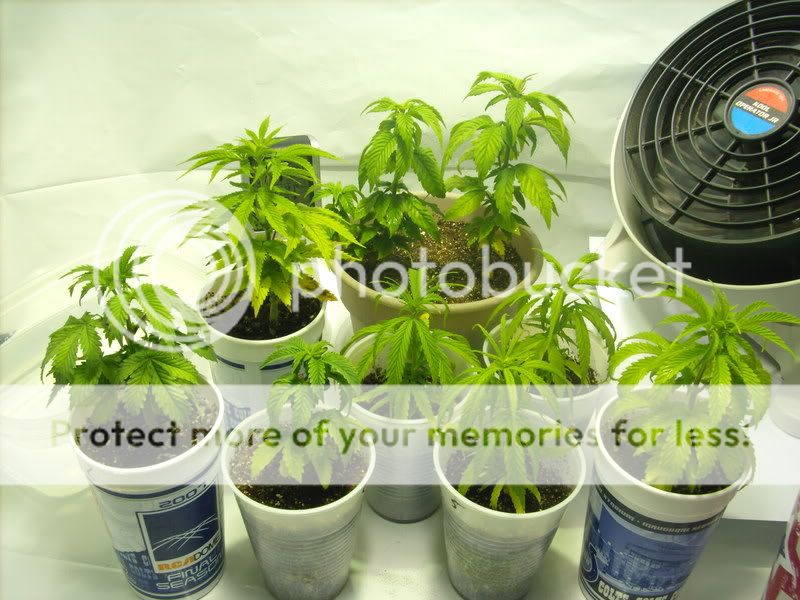ScottsBlown99
Well-Known Member
So here's the new closet setup, transplanted to 5 gals yesterday, well all that i had enough soil for, and yes separating the two plants from the same pot was a @#$%&!!  (any tips about post transplanting care? I added root stimi's again..)
(any tips about post transplanting care? I added root stimi's again..)
oh and the light is now 2 feet from plants, and i have higher humidity and lower temps now not to far is it?
not to far is it?
so i didn't really know much about topping untill a friend of mine told me i should have done it already.. he said to cut 80% off of the newest growth, is that right? I'm going to wait a week or so untill the plants have recovered from the transplant before doing this. Did i really wait to long?
i'm going to start using cal mag with my botanicare Pure Blend Pro veg nutes, is there anything else essiential they need? trying to get rid of the sometimes saggy leaves and discoloration


BEFORE:


 (any tips about post transplanting care? I added root stimi's again..)
(any tips about post transplanting care? I added root stimi's again..)oh and the light is now 2 feet from plants, and i have higher humidity and lower temps now
 not to far is it?
not to far is it?so i didn't really know much about topping untill a friend of mine told me i should have done it already.. he said to cut 80% off of the newest growth, is that right? I'm going to wait a week or so untill the plants have recovered from the transplant before doing this. Did i really wait to long?

i'm going to start using cal mag with my botanicare Pure Blend Pro veg nutes, is there anything else essiential they need? trying to get rid of the sometimes saggy leaves and discoloration



BEFORE:


